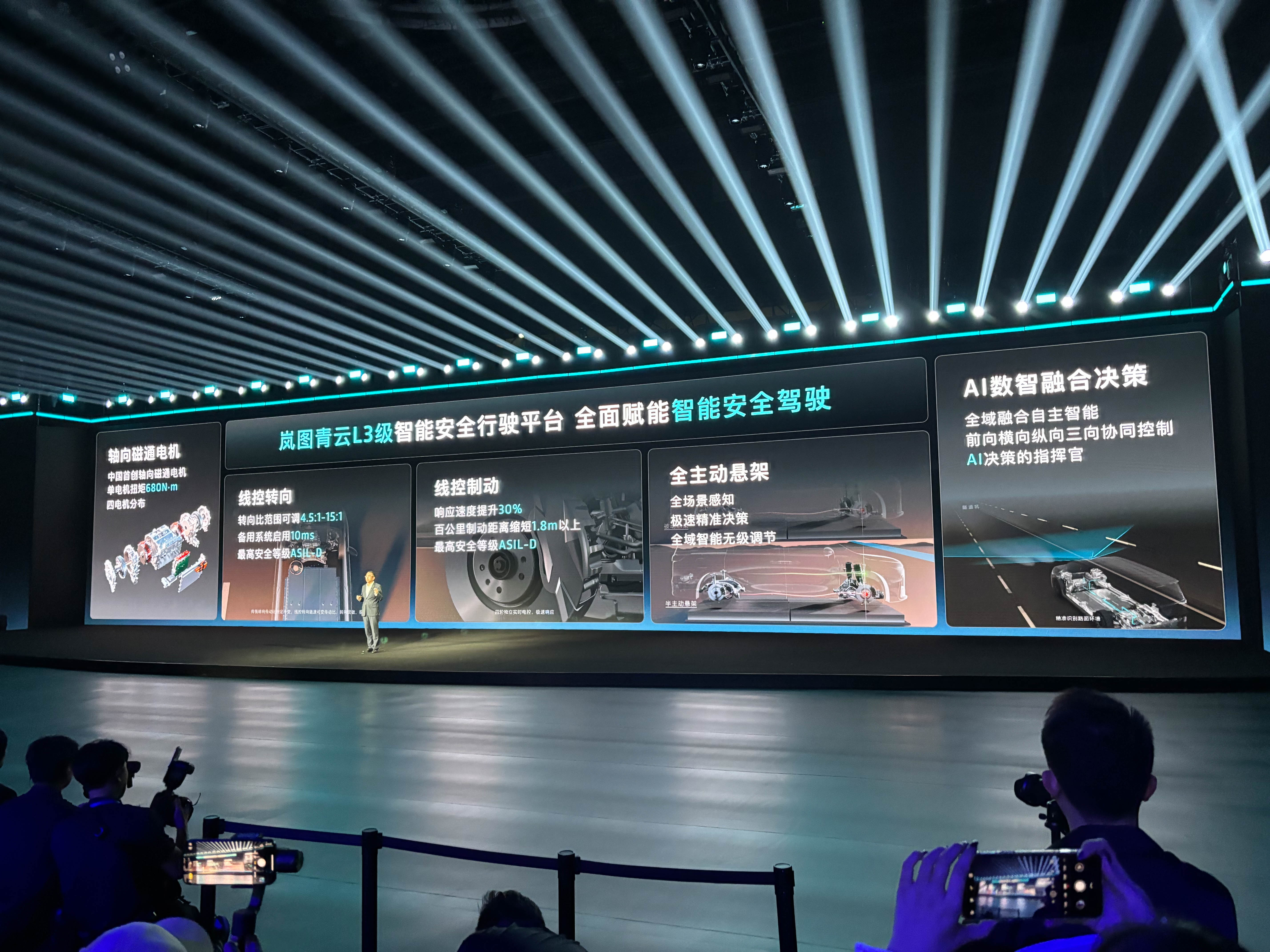In the race for China’s L3 autonomous driving assistance, a new competitor has emerged. On April 16, 2025, VOYAH held an L3-level intelligent architecture technology launch event, introducing its L3 intelligent architecture—”Tianyuan Intelligent Architecture.”

During the event, VOYAH focused on advancing the L3 autonomous driving technology architecture from both the software and hardware perspectives, specifically regarding the “Qingyun L3 Intelligent Safety Driving Platform” and the “Kunpeng L3 Intelligent Safety Driving System.”

What’s the relationship between motors, steering, and L3?
Under the Tianyuan Intelligent Architecture, the first component is the “Qingyun Platform,” which VOYAH refers to as the L3 Intelligent Safety Driving Platform. It includes technologies such as axial flux motors, steer-by-wire, brake-by-wire, rear-wheel steering, and full active suspension.

Regarding axial flux motors, they remain relatively underexplored in the passenger vehicle sector. Within the “Qingyun Platform,” VOYAH applies axial flux motors to vehicles, achieving a peak torque of 680 N·m per motor. Using a distributed four-motor drive approach, a VOYAH MPV can effortlessly tackle a 60% incline challenge, matching the capabilities of top-tier SUVs like the Mercedes G-Class and BYD Yangwang U8 as demonstrated in the event’s video presentation.
Previously, the BYD Yangwang U8 and the all-electric Mercedes G achieved in-place rotation; the VOYAH Qingyun Platform can achieve the same, courtesy of its four motors.
Additionally, rear-wheel steering technology has been integrated. The rear-wheel steering angle within the “Qingyun Platform” can be adapted according to different vehicle sizes, offering a wide adaptation range of ±5° or ±10°, and includes the widely appreciated crab mode.


To ensure the safety redundancy required for high-level L3 intelligent driving, VOYAH has incorporated steer-by-wire and brake-by-wire systems. Similar to most competitors, the steer-by-wire system reduces the need for extensive wheel rotations while offering broad control over front-wheel steering angles. Brake-by-wire systems boast faster response times than traditional hydraulic brakes with dual redundancy to achieve the highest safety standard, ASIL-D, fully compliant with L3. Another slight advantage is near-minimal maintenance requirements.
Recently popular active suspension technology is also featured in VOYAH, theoretically able to perform actions like the Porsche Panamera and Yangwang U9. Additionally, it can mimic the champagne tower move like NIO ET9. In VOYAH’s scenario, during a left turn where the body roll should theoretically lean right, the active suspension actual effect leans left, fully countering body roll and even going negative, which is quite counterintuitive. During daily driving, it mostly enhances vehicle comfort.

Regarding safety, VOYAH takes a cue from Audi. In the introduction of the Audi A8 (D5) generation, active suspension can lift the body to withstand impacts at its strongest points. VOYAH uses a comprehensive perception system to monitor collision risks in real-time during regular driving. It actively adjusts the vehicle’s posture for varied collision scenarios, enhancing both active and passive safety design functions.

From a driving hardware perspective, VOYAH has stacked significant features on the Qingyun platform: four motor axial flux motors, steer-by-wire, rear-wheel steering, brake-by-wire, and active suspension. While these features appear as if flexing muscles, in VOYAH’s design scenarios, they primarily ensure performance redundancy for L3 safety.
Significant Upgrades in Smart Driving Hardware
Based on VOYAH’s product strategy, all models this year will integrate Huawei’s ADS, from the new VOYAH Dreamer to the upcoming new FREE debuting at the Shanghai Auto Show, and future models. Additionally, under the Tianyuan architecture, VOYAH is simultaneously developing its self-developed Kunpeng Intelligent Driving System, an L3-level intelligent safety driving system.


Building upon Huawei ADS active safety foundations, this system enhances recognition and boosts intelligent driving safety bandwidth. It can identify a 15 cm object from 100 m away with L3 intelligent driving capability; it allows AEB stopping capabilities at speeds of up to 160 km/h.
VOYAH has not disclosed much about intelligent driving hardware at this stage. In the press conference, it was stated that the LiDAR has been upgraded, utilizing a main LiDAR with over 700 lines. The vehicle will have a total of 4 LiDARs and 48 sensors in total. Specific information about the intelligent driving chips has not been revealed yet, but available data suggests the use of dual flagship chips with a computing power of 1,000 TOPS, effectively enhancing the vehicle’s capabilities.

At the end of the conference, VOYAH announced its first product, the Tianyuan Intelligent Frame, with L3 intelligent driving capability. It is a full-size, large six-seat SUV, with the project code name “Taishan,” positioned as a flagship product and expected to be officially released in 2025.
This article is a translation by AI of a Chinese report from 42HOW. If you have any questions about it, please email bd@42how.com.
